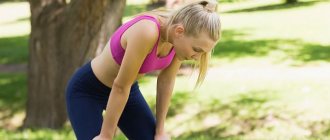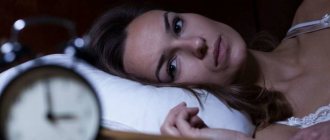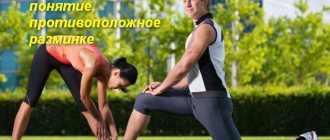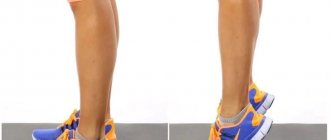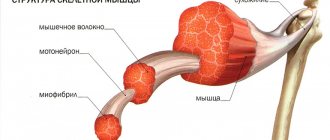All ointments with an analgesic effect and other forms for topical use are divided according to the included components, effectiveness and effect on the problem.
These types include:
- Topical ointments containing non-steroidal substances with an anti-inflammatory effect.
This group is very popular due to the fact that the action of such drugs is quite fast and gives very positive results. These ointments can be purchased over the counter without a prescription and are suitable for all types of injuries. - Chondroprotectors. These products contain glucosamine and chondroitin; these components are components of joint cartilage. In this regard, the use of such drugs is recommended for diseases of the musculoskeletal system associated with degeneration and dystrophy.
- Locally irritating and warming ointments. Such preparations are prepared on the basis of essential oils, snake and bee venom and on the basis of hot red pepper extract. Such ointments are recommended to be taken with extreme caution.
- Ointments that are effective for joint pain contain salicylic acid.
- Additional, combined products for topical use.
Most often, the main active ingredients of such ointments can be called:
- Bee venom;
- Snake poison;
- Red hot pepper extract;
- Menthol;
- Formic and other acids;
- Capsaicin;
- Propyl nicotinate;
- Novocaine;
- Methyl salicylate;
- Camphor;
- Anastezin.
Mechanism of action of creams
Warming and locally irritating creams work according to the following principle:
- Increase capillary permeability;
- Improves blood flow;
- Increase heat transfer;
- Relieves the inflammatory process in the injured area;
- Warm up;
- Pain relief using local irritation;
- Restore mobility.
- Bruises;
- Injuries;
- Rheumatism;
- Myalgia;
- Sprains;
- Inflammatory processes;
- Neuralgia;
- Radiculitis;
- To dilate blood vessels;
- Pain relief.
Method of use in athletes
Heat therapy is very useful when playing sports, since it is in this type of activity that many injuries occur. Warming ointment for athletes is used for preventive purposes.
After applying the ointment to the problem area, the temperature increases, this allows for more active blood flow, which leads to better nutrition of the cells that are restored.
Stiffness and discomfort go away, and the body begins to move as comfortably as possible.
- After an injury, it is recommended not to rub the product in, but to apply it and leave it until it is absorbed, this will avoid complications and unpleasant consequences.
- But if warming lubricant is used for prevention, for example, before difficult workouts, then the application process is completely different. In this case, it is recommended to rub the ointment very carefully into problem areas. This will help warm up the muscles and joints as much as possible and protect them from possible injuries from heavy physical activity.
conclusions
Often ointments are the first drug with which treatment begins. Sports ointments are widely used not only by professional athletes, but also by people who regularly exercise in gyms, stadiums or at home.
Local medications quickly reduce pain, cool and subsequently warm the muscles, help the nervous system to distract from pain, remove swelling and trigger regenerative processes. Due to the nature of their use, they begin to have an effect on the affected area as quickly as possible and do not cause significant side effects.
Contraindications and possible harm
- Warming ointments are not recommended for use in acute inflammation; they are more suitable for application immediately after injury.
- It is very important to check the ointment for allergic reactions before use. To do this, it is applied to a small area of the body and left for some time. If no negative changes have occurred, the product can be used without fear.
- The use of warming preparations is not recommended during pregnancy.
- Ointments should not be used by children under twelve years of age.
- Also, do not apply the ointment to those areas of the body where there are scratches, abrasions, cuts or other open injuries.
- If there is an individual intolerance to the components that make up the ointment, then it is best not to use the product. Therefore, you should carefully study the instructions and read the composition.
- The ointment is used very carefully for neuropathologies and diabetes.
- Do not use for infections, chronic hepatitis, tuberculosis.
Ointments are not suitable if there are serious hematomas that occupy a large area, bone fractures, or deep soft tissue injuries.
Since the composition of such ointments is very rich in active ingredients, side effects are possible.
Especially if there are open injuries in the form of scratches and abrasions on the skin at the site of injury. You should not use ointments if you have dermatitis and ulcers.
- Allergy;
- Burns on the skin;
- Ulcers at the site of application;
- Rash and redness;
- Purulent manifestations;
- Itching and irritation;
- Dermatitis;
- In some cases, allergies cause coughing and shortness of breath.
If even the slightest signs appear that should not be present, then you should stop using the drug.
Where to start and how to avoid overdose
For injuries, before using a warming ointment, be sure to make a cooling compress using products from the freezer or ice water; ointments with a cooling effect are also suitable.
Warming ointment for muscles is applied only after a few days.
- First of all, if you have back pain, you should start with homeopathic ointments; they will help restore metabolic processes, stop tissue destruction and enable faster recovery.
- Ointments with local irritating and warming action. They will improve blood flow, by dilating blood vessels, and relieve pain. They are very effective for pinching, hypothermia, myalgia and lumbago.
- Chondoprotectors. To restore metabolism in tissues after injuries, you can use ointments of this category. They will also help fight destruction of cartilage tissue, improve the tone and elasticity of joints and ligaments. These ointments will help relieve pain in the back, joints and lower back.
- Non-steroidal anti-inflammatory drugs.
Such drugs will help relieve pain and relieve inflammation. But it is worth remembering that such drugs have a lot of side effects and should be used with extreme caution. To prevent an overdose, apply the ointment no more than twice a day in a very thin layer. After some time, it is advisable to wash off the drug. You should not use warming ointments for a very long time and after a short course take a serious break.
Minor injuries are inevitable in almost any sport, especially when it comes to strength sports, in particular bodybuilding. Various sprains, back injuries, and pinched nerves are the injuries that most often occur among athletes in the gym.
The reasons why an athlete gets injured are different; it may be the wrong technique for performing exercises, incorrectly selected working weight, lack of warm-up before training, and, as a result, lack of any warming up of the muscles.
Using various warming ointments in the gym before training should become a habit for you if you do not want to get injured. Warm muscles and ligaments are much more elastic than cold ones, which can easily be torn. The risk of injury will be minimized if you are warmed up.
It will be much more correct and effective to use ointments for warming up than high-repetition training with light weights, which will give you unnecessary fatigue.
How to relieve muscle pain after exercise
Knowing the causes of muscle pain, it is easy to determine what causes the pain immediately after strength exercise or the next day after an intense workout.
If muscle pain is of a natural nature that arose during the workout, then you can repeat the exercise, but with less intensity. Such actions increase blood circulation, improve the supply of oxygen to tissues and eliminate muscle stiffness.
If pain is projected in the muscles of the lower extremities, then the pain can be eliminated with the help of cardio exercises, and pain in the upper body can be relieved by doing yoga.
If there are obvious signs of sore throat, then there are several methods that will help cope with muscle pain.
Massage for mild muscle pain
To eliminate congestion of smooth muscles, it is necessary to practice sports or relaxation massage sessions. It helps restore muscle performance, improves blood circulation, relieves mild muscle pain and spasms.
The massage is carried out simultaneously with adequate stress on tired muscles and proper rest. Also, the following procedures are recommended for massaging damaged areas when treating sore throat:
- Warm showers, paraffin baths, salt baths help to quickly relax muscle tissue.
- During severe muscle spasms, it is useful to use the Kuznetsov applicator.
Massage for sore throat will help restore nerve impulses in the muscles, increase blood circulation and metabolic processes. Also, massage will help relax muscles during intense exercise.
Massage technique for muscle soreness:
- The massage session should begin with light stroking and shaking of the gluteal and calf muscles.
- Next, move on to rubbing, straight and circular. First with the pads of the thumbs, and then with the pads of the four fingers. Next, use the phalanges of bent fingers and the base of the palm. Rubbing must be alternated with pressing.
- This is followed by deep kneading: double bar, double ring, tong-shaped.
- 5 minutes before the end of the massage session, a rubbing agent is applied to the sore spot: finalgon, apizartron (in case of severe muscle pain, the product can be rubbed around the affected area).
- After 3 minutes, you need to perform a deep massage of the sore spot.
- After completing the session, a compress is applied to the painful area to preserve the body.
Pay attention to the details of the massage in the following video.
If you refuse massage sessions with muscle soreness, this can further lead to contracture of muscle tissue and pathological degeneration of smooth muscles.
Also, in addition to massage sessions, it will be useful to perform appropriate exercises for muscle soreness. For mild pain, a technique called myofascial release helps.
Choice of ointment
There are a huge number of warming ointments on the market, and sometimes it is difficult for a beginner in this matter to decide on the right choice.
According to their specificity, all ointments for athletes can be divided into warming (before training) and relaxing (after training). This is an important point, because many do not read the instructions for the ointment, where it is written in black and white that this ointment is used after training, but not before, so as not to have the opposite effect, instead of warming up the muscles, you will get their relaxation.
The undisputed leader for warming up muscles before physical activity is ointments such as Capsicam
(Estonia) and Hungarian
Nicoflex
.
Many athletes complain about the strong burning sensation of Capsicam on the skin, unlike Nicoflex, which does not burn as much and can also be easily washed off under water. An ideal price-quality ratio, as well as practical benefits during training, a large volume of a tube of ointment - these are the qualities that Nicoflex has.
When we have decided on the ointments, we move on to the process of applying the ointment to the muscles. It is correct to apply the ointment to the area of the body that is being trained, for example, if you are training your legs, namely, then it is more advisable to rub the ointment into the knee joint and hips.
No one will take care of your health except you, so don’t get yourself injured, always use ointments to warm up your muscles before training.
To ensure that training does not cause awkwardness and brings benefits to the body and maximum moral satisfaction, it is necessary to start it correctly. To do this, before starting a workout, many use a special sports warming ointment. It helps to warm up the muscles and ligaments before starting exercise and reduce possible injuries and spasms.
A good warming ointment also has analgesic and anti-inflammatory properties. And due to the bee and snake venom they contain, these ointments increase capillary permeability and significantly increase blood flow to tissues and heat transfer. This miraculous remedy can protect exercise enthusiasts from injury, as well as reduce muscle tension after training. For the best effect of the cream, before training it is necessary to massage the body, which will bear the main load.
Warming ointment for athletes
Previously, turpentine was used to warm up the body. By the way, this remedy has been part of many ointments for a long time. Now it has been replaced by capsaicin, which is part of capsicum. Capsaicin is also effective, especially in warming ointments for joints.
If your Achilles heel is your legs, then spend five minutes on them during your warm-up. Be sure to do a self-massage and rub the “Finalgon” warming foot ointment into the skin. By the way, it can also be used after a cool-down. The only thing is, don’t overdo it, the body gets used to it very quickly. It is best to do the course of therapy for no more than two weeks, and you can replace this ointment with Fastum Gel.
If you plan to load your back during training, then you will need a warming ointment for your back. Give preference to proven creams, for example, Diclofenac, Efkamon, Ortofen.
How to wash off the warming ointment?
If you have already used a warming ointment, then you know that after some time it begins to burn uncontrollably. It is quite simple to prevent this, just do not use water or alcohol tinctures. The most basic way is sunflower oil or rich cream. You can also use hawthorn tincture.
Warming ointments for muscles are, first of all, medicines. Use them carefully and do not forget to study the instructions to protect yourself from possible dermatological problems.
Training should bring only benefits to athletes. However, minor injuries are inevitable in sports, especially if you are actively involved in sports. The main reasons for their appearance are incorrect exercise technique, lack of warm-up and warming up of the muscles.
To avoid sprains, pinches and other injuries, it is important to use a warming ointment for athletes before training. It is necessary to warm up ligaments, muscles, prevent spasms and injuries. Today we will talk about the benefits and effectiveness of warming ointments for athletes, and also find out what to apply to muscles before training.
Why do you need warming ointments before training?
Warming ointments for muscles must be present in every athlete’s first aid kit. Therefore, if you know that you are going to have a hard workout with active physical activity, be sure to take a warming ointment for training with you to the gym. This will help you avoid negative consequences.
The main benefits of warming ointments before training are as follows:
— Prevention of injuries.
It is important to start training correctly and this should be done by using a warming ointment for the joints. The muscles become more elastic, it is much more difficult to damage them in this state; — Reducing pain; — Elimination of swelling after sports; — Improving heat exchange and blood supply to tissues by increasing capillary permeability. This happens thanks to snake, bee venom or pepper extract included in the warming ointments; — Reducing muscle tension after training. Every athlete knows what muscle pain is after physical activity. If you know what to lubricate your joints before training, this problem can be avoided; — Acceleration of tissue regeneration. In addition to the above effects, a good warming ointment additionally has an anti-inflammatory and analgesic effect. We also recommend additional massage of muscles that will be subject to special stress during training. For example, if you squat with heavy weights while working out in the gym, then it is important to smear your body with warming ointment in the lower back, knees, and along the spine before training. This will improve the effectiveness of the ointment with a warming effect. The use of warming ointments for athletes before exercise in the gym should become a habit.
If you don’t know what to smear your body with before training, then we will help you solve this issue. We present a review of the best and effective warming ointments for joints. The choice of warming ointment for athletes depends solely on the main active ingredient.
Types of pain
Types of pain after exercise:
| View | Description |
| Moderate (natural) | Forms a day after classes. There is a feeling of malaise and slight pain, which increases with stretching and contraction of the muscles. The pain continues for several days, which indicates the presence of microtraumas in the muscles. Muscle recovery and growth occurs. |
| Lagging | It is felt 2-3 days after training due to the large interval between workouts, when new exercises are added to the load plan, and also in beginners. The duration of pain is about 4 days, and for beginners up to 7 days. In this case, you need to continue training, but reduce the load. |
| From overtraining | Phantom pain is felt not only in the muscles, but also in the joints 2-3 hours after exercise. They disappear unexpectedly, just as they appear. Pain occurs with excessive amounts of intense strength training, which are accompanied by frequent microtraumas. In this case, the muscles do not have enough time to regenerate. |
| From injury | Suddenly there is a sharp pain after performing the exercise. Intensifies when muscles are stretched. This may cause redness and swelling. We need to stop training. If symptoms persist, you should consult a specialist. |
https://youtu.be/GklQIwUUWqc
Ointment with a warming effect based on pepper
— Capsicam is made on the basis of dimethyl sulfoxide. Suitable for people with insensitive skin. Valid for up to 12 hours; — Nicoflex has a mild warming effect. Suitable for all areas of the body. Can be used for massage; — Finalgon is an ointment with a warming effect based on nicoboxil and nonivamide. It is quite strong, so should not be applied to sensitive areas, not suitable for people with sensitive skin. It is not recommended for use by people with heavy sweating, since contact with liquid increases the effect of any warming ointment.
What are some warming ointments based on venom (bee, snake)
— Apizartron is one of the most popular pre-workout warming ointments based on bee venom. It has a therapeutic effect and is recommended for the treatment of tissue damage and degenerative disorders. Its only drawback is the pungent smell. Therefore, it is recommended to use before training at home; — Mellivenone is produced on the basis of bee venom, chloroform. Can be used for bursitis, osteochondrosis and muscle pain; — Viprosal is a drug based on the venom of the common viper. The composition also contains salicylic acid, camphor, and gum turpentine. Has an analgesic and irritant effect. Stimulates vasodilation. It is recommended to use for the treatment of neuralgia, myalgia, radiculitis and sciatica.
Active ingredients in sports ointments
Surprisingly, the list of active substances widely used in numerous sports ointments, creams and gels is not as wide as one might expect. I will give the main components:
- Methyl salicylate.
- Ketoprofen.
- Diclofenac.
- Ibuprofen.
- Indomethacin.
They all do the same thing - inhibiting cyclooxygenase. Don't let this tricky phrase confuse you. We are talking about reducing pain and inflammatory symptoms. Each active ingredient does this to varying degrees of effectiveness, but ultimately reduces pain.
Other substances can be found in sports products, the effect of which is to create irritating and distracting effects. I have already mentioned that higher nervous activity must be distracted from pain. Help with this:
- Bee venom.
- Snake poison.
- Mustard and pepper extract.
- Menthol.
- Camphor.
Other warming ointments for athletes
— Ben-Gay is a drug based on methyl salicylate. It has a strong smell, it is recommended to use it to relieve muscle pain and relieve fatigue after training; — Diclofenac has both anti-inflammatory and warming effects. Helps eliminate swelling and pain. It is recommended to use for the treatment of inflammatory, destructive syndromes, during rehabilitation after injuries; — Arthro-Active warming also has an anti-inflammatory and analgesic effect. It is recommended to use for joint pain, swelling, and to restore blood flow.
When to use painkillers
The range of applications of pain-relieving ointments is very wide. They are used for:
- Arthritis and arthrosis.
- Damage to skin tissue.
- Osteochondrosis.
- For pain in the back, spine, neck.
- For bruises and sprains.
- Pain in the joints, in the lower back.
- For injuries.
- In case of damage to the calf muscles.
- In the event of severe pain syndromes.
I repeat, if we are talking about serious illnesses and injuries, then before using the product you should consult a doctor. If the drug is used to combat minor injuries resulting from sports exercises, then you can get advice from a trainer. You can also contact me through the feedback section.
How to properly use warming ointment
Warming ointments before training as a preventative measure should be applied to areas of the body that will be subject to special stress during training.
It is best to use a special spatula for application. Warming ointments for joints and muscles are also used for sports massage before preparing an athlete for competitions. After application, wash your hands well with soap and warm water. Avoid getting ointments and gels with warming properties into your eyes, nose, mouth, etc. The warming ointment should be washed off the body using a rich cream, hawthorn tincture or sunflower oil. You cannot use water or alcohol tinctures for this purpose.
What ointments are best suited for this purpose?
Read the instructions included with the drug.
The remedy is selected based on its intended purpose:
- warm up the tissues before training;
- relieve tension and fatigue after physical activity;
- to repose, to cure illness, injury.
Before sports activities, select mild drugs that stimulate muscle activity: Nicoflex, Gevkamen, Efkamon, Emspoma (type “O”).
After training, focus on the relaxing properties of drugs: Ben-Gay, Emspoma (type “Z”).
What to look for when choosing?
For prevention, avoid using products based on non-steroidal substances (ibuprofen, methyl salicyate, etc.). Such drugs slow down the growth of muscle fibers, thereby reducing the results of training (Dr. A.L. McKay). Also use diclofenac only for treatment - if used uncontrolled, the substance disrupts the production of insulin in the body, increasing the risk of diabetes.
Top 5 best warming ointments
According to a survey among athletes, the 5 best warming drugs for prevention were selected.
Scroll:
- Nicoflex (Hungary) : 45% of people surveyed voted. The argument is that it warms up gently, there is no burning sensation, no allergic manifestations, no unpleasant odor.
- Kapsikam (Estonia) : 13% of participants chose it. It doesn't stink, it gets very hot, and sometimes it burns.
- Finalgon : 12% of votes. The 1% gap does not play a significant role, since the reviews for Finalgon and Capsicam are the same.
- Ben-Gay : 7% rated its effect after training. Not suitable for preheating.
- Apizartron : won only 5% of the votes due to the only drawback - it cannot be used outside the home due to the presence of an unpleasant odor.
Sixth in line is Viprosal based on snake venoms (4%). Products with other herbal components took the lower ranks: from 0 to 3% of participants voted for each, citing their weak warming properties.
The voting did not take into account warming medications that are prescribed during treatment.

